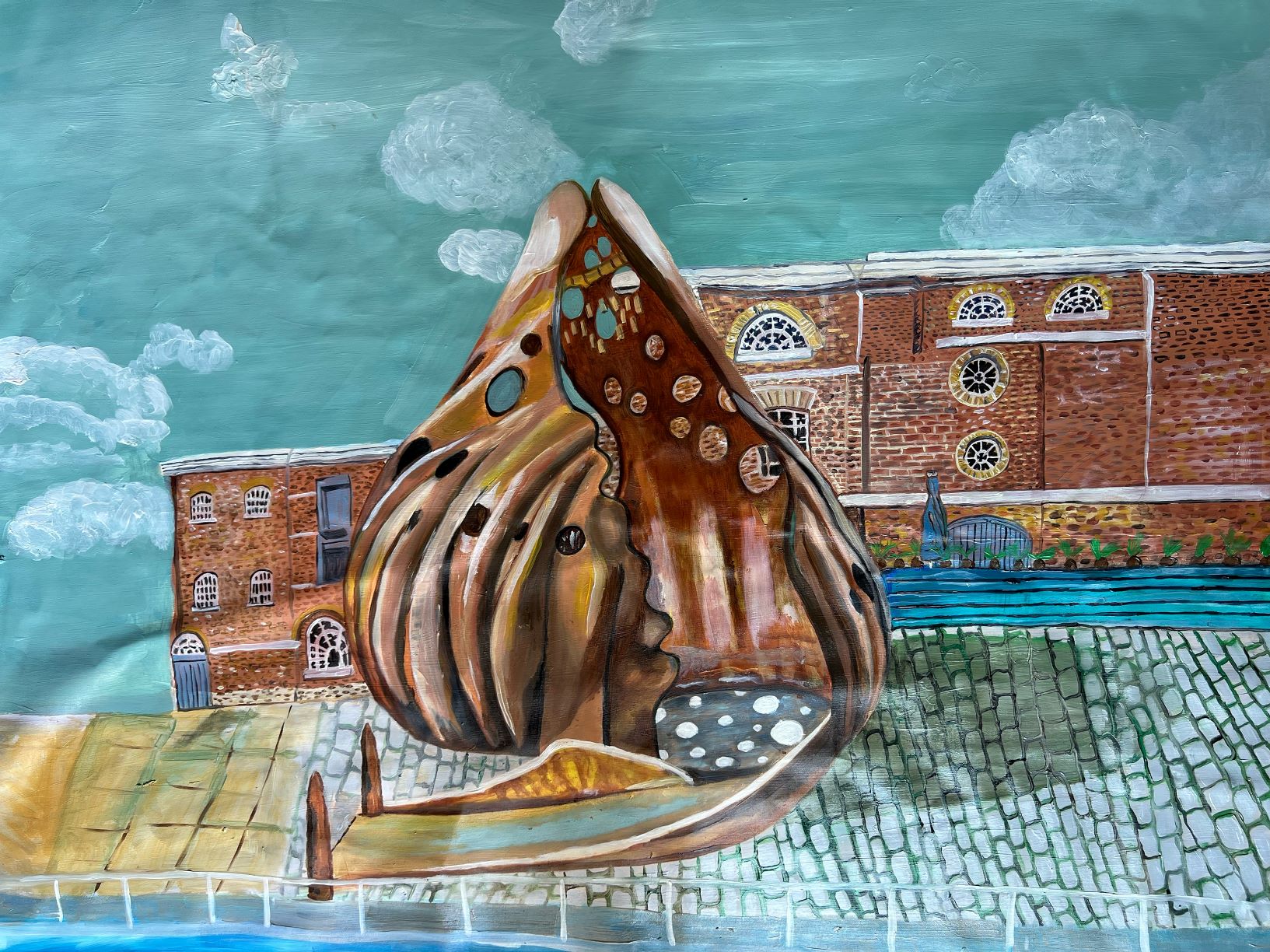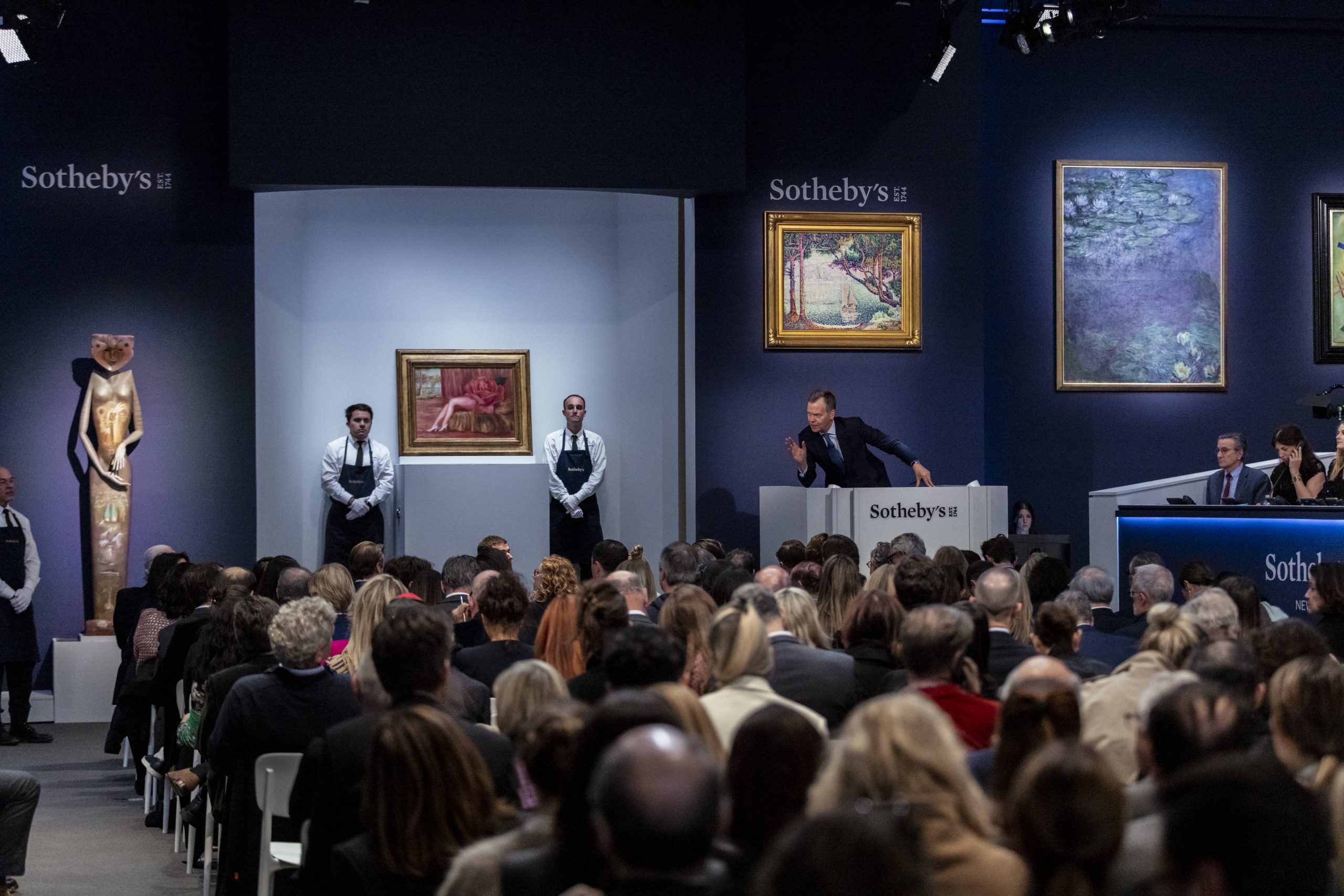Artist Khaleb Brooks will design London’s first memorial to the victims of the transatlantic slave trade, acknowledging the city’s pivotal role in it. His design The Wake, a 23-foot-tall bronze cowrie shell, was chosen from a shortlist of six proposals for the £500,000 ($660,000) monument.
The public sculpture will unveiled in 2026 in West India Quay in London Docklands, on the banks of the River Thames in East London. The area was once a busy hub of international trade and its huge warehouses were built to store the spoils of slave labor, such as sugar from Britain’s colonies in the Caribbean and North America.
“It’s essential that London’s streets, statues, and memorials reflect our shared history, and this memorial will help to remind and educate Londoners of the capital’s role in this terrible treatment of human beings,” said Sadiq Khan, the mayor of London. “It will also honor the achievements of descendant communities, as we continue to build a better and fairer London for everyone.”
Visitors will be able to enter the artwork via two bronze sculptures of sugarloaf mounds, the form in which sugar was sold before the invention of granulated and cube sugars in the late 19th century. They will then walk up a ramp that has been inscribed with poems by the contemporary British writer Yrsa Daley-Ward.
The interior walls of the shell will bear the names of enslaved people alongside blank lists, commemorating the many individuals who remain unidentifiable.
The cowrie shell was used as a currency, first in Africa and later by European traders in exchange for enslaved people. For Brooks, it has become “a multifaceted symbol of resilience,” becoming the basis for a monument that “represents the perseverance, prosperity, and beauty rooted in Africa and African diasporic heritage.”
A rendering of Khaleb Brooks’ The Wake, as London’s first slavery memorial. Image courtesy of Greater London Authority.
The permanent public artwork is part of Khan’s Commission for Diversity in the Public Realm. There will also be a series of satellite sites across the city marked by smaller shells at locations connected to the slave trade. Brooks said The Wake will be activated by a year-long launch program of readings, performances, and live music.
“We are our history, it tells us where we’ve been, where we are and the direction we could go,” said Brooks. “Through honoring, grieving, healing, and learning about those who faced the horror of slavery before us, we make a conscious effort to engage the liberatory ethics that sought an end to the trade.”
Born in 1991 and originally from Chicago, Brooks’ work is often based on his own experiences and collective memory. In 2021 and 2022 he completed a year-long research residency at the International Slavery Museum in Liverpool. This resulted in “Jupiter’s Song,” an immersive, multimedia exhibition commemorating those who died during the Middle Passage.
Five other artists proposed designs for the memorial that were shortlisted in June, with the public invited to vote for their favorite. Barbadian-Scottish artist Alberta Whittle planned an installation featuring a pavilion, a sugarcane field, and cowrie shells. Grada Kilomba, from Portugal, proposed an installation of boats, directly invoking the treatment of enslaved people as cargo during the Middle Passage.
A series of round stone structures arranged like a ripple where designed by British artist Helen Cammock, evoking the ongoing ripple effects of such a large scale historical atrocity as the slave trade. A 11-foot-tall, colorful representation of the Afro-futurist deity Nana Buluku was proposed by the British-Trinidad artist Zak Ové.
Guyanese-British sculptor Hew Locke’s design commemorates enslaved children, with one drummer boy standing atop a large plinth as other bronze figures march towards him, each carrying London buildings that were built using money made from the slave trade. This fall, the artist will curate a special exhibition at the British Museum that will feature new works and new interpretations of objects in the institution’s collection that have ties to colonialism.
In an announcement issued by the London Assembly, the elected body noted: “We acknowledge the word ‘victim’ comes with complex meanings. For some, it validates that horrifying crimes were committed against enslaved Africans. For others, it is passive and ahistorical, denying the strength and resistance of those enslaved.” It promised to “continue to listen and explore how we can best talk about this project in a manner that is respectful, humanizing and accurate.”
Follow Artnet News on Facebook:










